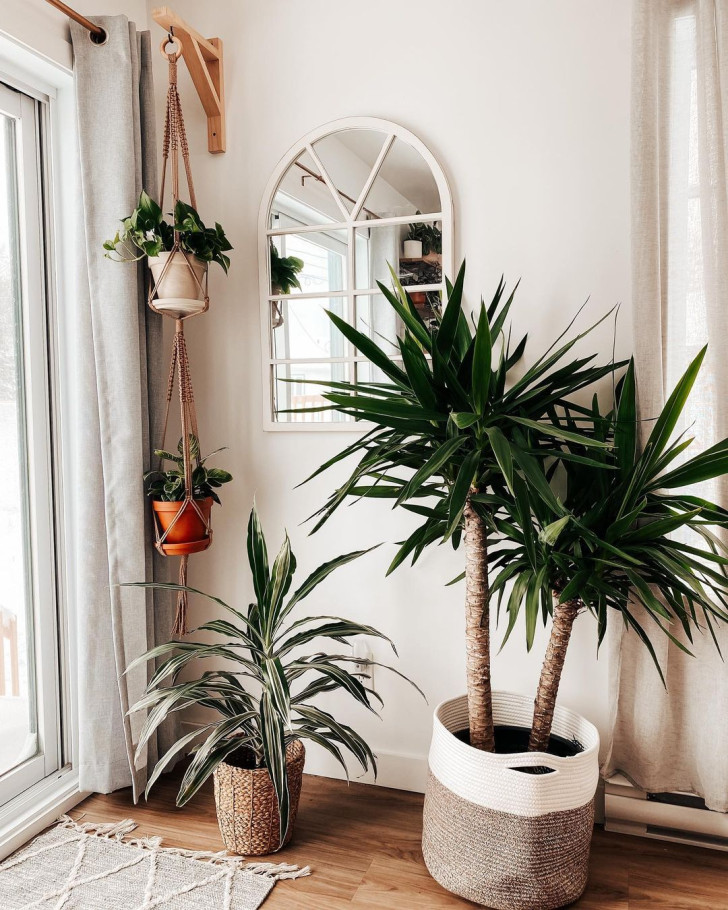Home cultivation and care of the Yucca plant: tips to allow it to thrive

Yucca (also spelled Yukka) is one of the most popular indoor or garden plants, known for its incredible beauty and its ease of cultivation. Commonly called Adam's needle, Spanish bayonet or the needle palm, this plant is frequently given as gifts on special occasions such as home moves, weddings, births or job changes.
The genus is made up of 40 different species of evergreen perennial shrubs, of which only a few are grown as houseplants. Yucca are characterized by thick trunks where water is stored and sword-shaped leaves formed into rosettes at the ends of their leaf stems.
Their growth is very slow and they require very little care, so they are perfect for "beginner" gardeners. Yucca can survive even in the most adverse conditions, as long as a few simple precautions are taken.
So, what is the best way to care for a Yucca? Well, check out these tips:
Yucca cultivation

Yucca are very low-maintenance, but you should pay attention to the following:
- Re-pot immediately after purchase and then every 2 years, choosing a container which is 2 sizes larger;
- Place it in a bright spot (but it wll grow - albeit slower - in partial shade);
- Temperatures in the home must not exceed 18-20 degrees C or drop below 10 degrees C;
- Water sparsely in winter, and only when the soil is almost dry out; in summer, watering must be more generous. In apartments, it is advisable to spray/mist the leaves with water every 3-4 days;
- Fertilization is not essential but can be carried out in winter every 25-30 days and in spring-summer every 10-12 days; the plant will respond almost immediately with a large crop of new leaves.
Possible problems with Yuccas

So, what problems can a Yucca have? Well, there are several, but they are simple to treat:
- The appearance of gray spots on the leaves indicates the presence of gray mold, which must be carefully eliminated from the plant with a solution of water and bicarbonate; once done, move the plant to a ventilated spot;
- Yucca only blooms when it is outdoors, but if the flowers do not appear, the cause could be a lack of sun or the plant is still too young;
- If the leaves turn brown (entirely or just the tips), the cause is due to a lack of humidity, which you can remedy by increasing the frequency of watering and misting the leaves;
- Leaves that turn yellow mainly at the base of the plant are a symptom of a lack of light, which can be resolved by moving the plant to a brighter spot.
Following these precautions, your Yucca will thrive!